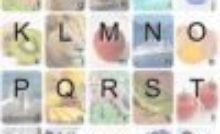Lesson 14. The Complete Guide to Verb TO HAVE in English


The Verb To Have in English


After the verb to be, ‘the verb to have’ ranks as the second most commonly used verb in English. The verb to have in English can be used as the main verb or an auxiliary verb.
Verb Forms
Simple Present Tense
[Click on the subtitle to learn more about simple present tense]
| Positive | Positive (Contracted) | Negative | Negative (Contracted) | Question |
| I have | I’ve | I do not have (A,B) I have not (B) | I don’t have (A,B) I haven’t (B) | Do I have? |
| You have | You’ve | You do not have (A,B) You have not (B) | You don’t have (A,B) You haven’t (B) | Do you have? |
| We have | We’ve | We do not have (A,B) We have not (B) | We don’t have (A,B) We haven’t (B) | Do we have? |
| They have | They’ve | They do not have (A,B) They have not (B) | They don’t have (A,B) They haven’t (B) | Do they have? |
| He has | He’s | He does not have (A,B) He has not (B) | He doesn’t have (A,B) He hasn’t (B) | Does he have? |
| She has | She’s | She does not have (A,B) She has not (B) | She doesn’t have (A,B) She hasn’t (B) | Does she have? |
| It has | It’s | It does not have (A,B) It has not (B) | It doesn’t have (A,B) It hasn’t (B) | Does it have? |
Note:
– There is no contracted form of the verb to have in question form.
– (‘s) contraction can be used for indicating both the verb to be ‘is’ and the verb to have ‘has’.
– (A,B) means that it is used in both American and British English.
– (B) means that it is acceptable in British English.
– Auxiliary verb only used the version of haven’t and hasn’t (Not: do not have or does not have).
Simple Past Tense
| Positive | Positive (Contracted) | Negative | Negative (Contracted) | Question |
| I had | I’d | I did not have | I didn’t have | Did I have? |
| You had | You’d | You did not have | You didn’t have | Did you have? |
| We had | We’d | We did not have | We didn’t have | Did we have? |
| They had | They’d | They did not have | They didn’t have | Did they have? |
| He had | He’d | He did not have | He didn’t have | Did he have? |
| She had | She’d | She did not have | She didn’t have | Did she have? |
| It had | It’d | It did not have | It didn’t have | Did it have? |
Note:
– There is no contracted form of the verb to have in question form.
– The contraction form is normally used in conversation but not in formal writing.
– (‘d) contraction can be used for indicating both the verb ‘would’ and the verb to have ‘had’.
Present Continuous Tense
| Positive | Positive (Contracted) | Negative | Negative (Contracted) | Question |
| I am having | I’m having | I am not having | I’m not having | Am I having? |
| You are having | You’re having | You are not having | You’re not having You aren’t having | Are you having? |
| We are having | We’re having | We are not having | We’re not having We aren’t having | Are we having? |
| They are having | They’re having | They are not having | They’re not having They aren’t having | Are they having? |
| He is having | He’s having | He is not having | He’s not having He isn’t having | Is he having? |
| She is having | She’s having | She is not having | She’s not having She isn’t having | Is she having? |
| It is having | It’s having | It is not having | It’s not having It isn’t having | Is it having? |
Note: There is no contracted form of the verb to have in question form.
Past Continuous Tense
| Positive | Negative | Negative (Contracted) | Question |
| I was having | I was not having | I wasn’t having | Was I having? |
| You were having | You were not having | You weren’t having | Were you having? |
| We were having | We were not having | We weren’t having | Were we having? |
| They were having | They were not having | They weren’t having | Were they having? |
| He was having | He was not having | He wasn’t having | Was he having? |
| She was having | She was not having | She wasn’t having | Was she having? |
| It was having | It was not having | It wasn’t having | Was it having? |
Note: There are no contracted form of the verb to have in positive and question forms.
Present Perfect Tense
| Positive | Positive (Contracted) | Negative | Negative (Contracted) | Question |
| I have had | I’ve had | I have not had | I haven’t had | Have I had? |
| You have had | You’ve had | You have not had | You haven’t had | Have you had? |
| We have had | We’ve had | We have not had | We haven’t had | Have we had? |
| They have had | They’ve had | They have not had | They haven’t had | Have they had? |
| He has had | He’s had | He has not had | He hasn’t had | Has he had? |
| She has had | She’s had | She has not had | She hasn’t had | Has she had? |
| It has had | It’s had | It has not had | It hasn’t had | Has it had? |
Note: There is no contracted form of the verb to have in question form.
Past Perfect Tense
| Positive | Positive (Contracted) | Negative | Negative (Contracted) | Question |
| I had had | I’d had | I had not had | I hadn’t had | Had I had? |
| You had had | You’d had | You had not had | You hadn’t had | Had you had? |
| We had had | We’d had | We had not had | We hadn’t had | Had we had? |
| They had had | They’d had | They had not had | They hadn’t had | Had they had? |
| He had had | He’d had | He had not had | He hadn’t had | Had he had? |
| She had had | She’d had | She had not had | She hadn’t had | Had she had? |
| It had had | It’d had | It had not had | It hadn’t had | Had it had? |
Note: There is no contracted form of the verb to have in question form.
Have/Have Not Questions
In order to construct have/have not questions, we use the auxiliary verb ‘do, does, did’, depending on the subject and tense. Examples:
Positive: I have a dog.
Question: Do you have a dog?
Positive: She has long hair.
Question: Does she have long hair?
Positive: They had a party last night.
Question: Did they have a party last night?
Have/Have Not Answers
To answer the questions above, we can use the following:
Positive Answer: Yes, I have a dog (Yes, I have).
Negative Answer: No, I don’t have a dog (No, I don’t).
Positive Answer: Yes, she has long hair (Yes, she has).
Negative Answer: No, she doesn’t have long hair (No, she doesn’t).
Positive Answer: Yes, they had a party last night (Yes, they had).
Negative Answer: No, they didn’t have a party last night (No, they didn’t).
Main Verb
As a main verb, ‘the verb to have’ shows possession, characteristic, activity, etc. Examples:
She has a bakery.
[possession].
I have brown eyes.
[ability].
He had a shower.
[activity].
In fact, ‘the verb to have’ is generally used for substituting ‘the verb to eat’ and ‘the verb to drink’.
We have scrambled eggs every morning.
[We eat scrambled eggs every morning].
I had a cup of tea in the afternoon.
[I drank a cup of tea in the afternoon].
Auxiliary Verb
The verb to have can be used as an auxiliary verb in order to form present perfect tense and past perfect tense.
Structure: Have/Has/Had + Verb 3
Examples:
Positive: I have lived in Switzerland for 20 years.
Negative: I haven’t lived in Switzerland for 20 years.
Question: Have you lived in Switzerland for 20 years?
[Verb 1 = live; Verb 3 = lived].
Positive: It has been a long time since we talked.
Negative: It hasn’t been a long time since we talked.
Question: Has it been a long time since we talked?
[Verb 1 = to be; Verb 3 = been].
Positive: We had walked for all day.
Negative: We hadn’t walked for all day.
Question: Had we walked for all day.
[Verb 1 = walk; Verb 3 = walked].
Note: Verb 3 is also known as past participle form of the verb.
Contraction Forms
When we use ‘have/has/had’ as the main verb, they are not abbreviated.
I have two movie tickets.
[Not: I’ve two movie tickets].
We had lunch in a French restaurant.
[Not: We’d lunch in a French restaurant].
As an auxiliary verb, ‘have/has/had’ are usually used in spoken English rather than in written English.
Contraction forms are normally used in the perfect form tenses.
Additional Notes
In addition, ‘to have’ can also serve as a modal verb. In general, the modal verb to have carries a meaning of something that is obligatory. We will cover the full lesson in the upcoming post.
Let’s learn English today! Join us at LingoCards!
